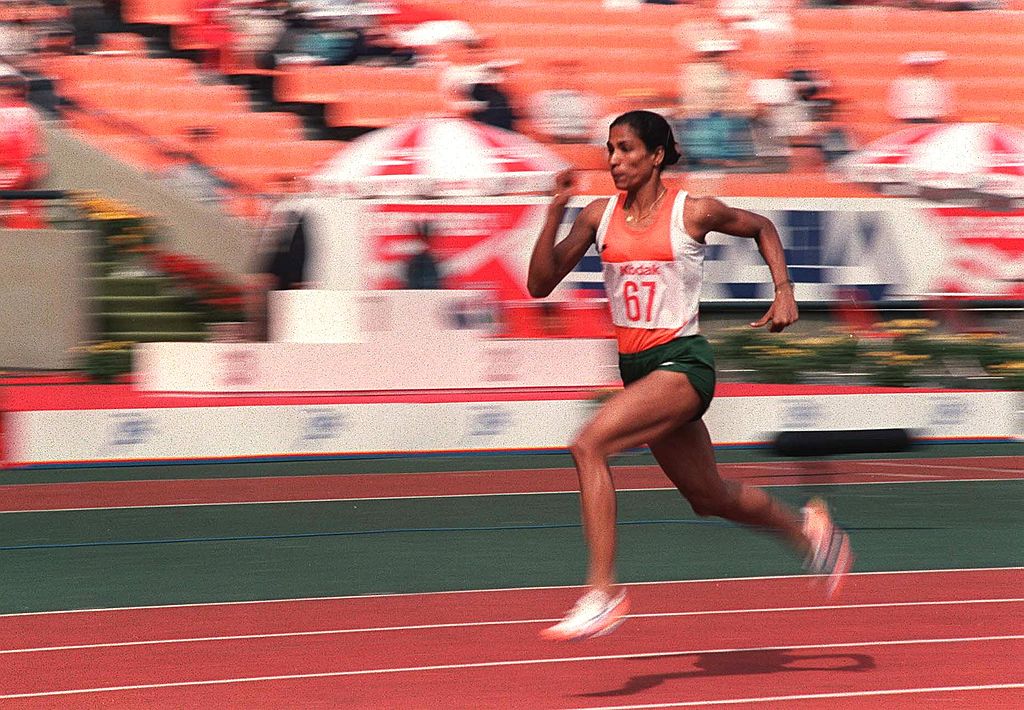New Delhi, Dec 10 (PTI) To put it simply, PT Usha is a trailblazer in her own right.
From reviving a moribund Indian athletics scene in the 1980s with exploits on track to her ascent to the presidency of the country’s apex sports body, the sprint queen continues to inspire millions.
Most remembered not for her innumerable moments of triumphs but a heartbreaking loss in sport’s grandest stage, she scripted history yet again by becoming the first woman president of the Indian Olympic Association (IOA), 22 years after hanging her spikes.
Fondly called the ‘Payyoli Express’, Usha has had many firsts during her two-decade long illustrious career, from being a lean fourth standard student, who beat her senior school sprint champion in Kerala’s Payyoli, to featuring in Pakistan National Games in 1980, and then representing the country at the age of 16 in the Moscow Olympics.
The 58-year-old track and field icon, who missed out on becoming the first Indian woman to win an Olympic medal by a whisker in the 1984 Los Angeles Games 400m hurdles finals, has conquered another frontier, this time as a sports administrator.
Her anointment to the top post surprised many, but nobody was willing to fight against Usha who was nominated to the Rajya Sabha by the ruling Bharatiya Janata Party, in July.
After her retirement in 2000, Usha has not shown any inclination to sports administration though she continued her association with track and field as mentor to promising athletes at her academy — Usha School of Athletics — in her native place near Kozhikode.
She has not held any top office in the Athletics Federation of India (AFI) though she is currently the chairperson of its junior selection committee. She has also served in national award committees of the government.
The IOA presidency will be a test of her administrative acumen, but she does not shy away from speaking out her mind, as she had done against the AFI in 2009 when she was reportedly not given proper accommodation during a national championships in Bhopal. The AFI though had claimed that the incident happened due to “communication gap”.
The constant bickering among the top functionaries of the IOA and the International Olympic Committee’s warning to ban India, if elections are not held by this month, led to the appointment of a retired judge by the Supreme Court to prepare a new constitution and hold the polls.
Under the new constitution, the door was thrown open for any citizen of India to contest the IOA elections if he or she is in the electoral college made up of representatives of the National Sports Federations and Sportspersons of Outstanding Merit (SOMs) who were to be selected by the newly-formed Athletes Commission.
All these cleared the path for Usha’s installation as the top boss in the country’s sports adminstration hierarchy as she made it as one of the SOMs.
“I am satisfied as I have achieved all I had aimed for, except for an Olympic medal. I now want to ensure that one of my students wins one (Olympic medal),” she had said just after her retirement in 2000.
But fate had other things in store for her as Usha became the first Olympian and international medallist sportsperson to head the IOA in its 95-year-old history. She is also the first sportsperson to have represented the country and become IOA chief since Maharaja Yadavindra Singh, who played a Test match in 1934.
Singh was the third IOA president and held office from 1938 to 1960.
Usha is one of the most decorated Indian athletes, having won 11 medals, including four gold in the Asian Games from 1982 to 1994.
She won all the four gold in the 1986 Seoul Asian Games — 200m, 400m, 400m hurdles and 4x400m relay — and also bagged a silver in the 100m.
Usha won a 100m and 200m medals in the 1982 New Delhi Asian Games. She also won a phenomenal 23 medals, including 14 gold, in the Asian Championships from 1983 to 1998, collectively in 100m, 200m, 400m hurdles, 4x100m relay and 4x400m relay.
But her biggest reference remains the Los Angeles Olympics 400m hurdles final, where she was beaten in a photo finish by Cristieana Cojocaru of Romania by one hundredth of a second, depriving the Indian of the bronze medal.
Born in a humble family at village of Kuttali near Payyoli town in Kerala’s Kozhikode district, Usha showed her running prowess at a very young age. She beat the champion runner of her school, at nearby Payyoli, who was three years senior to her. She was just nine then.
That led to Usha getting shifted to a sports school established by the Kerala government with a monthly stipend.
In 1977, her prodigious talent attracted the attention of the celebrated coach OM Nambiar — who died last year — who moulded Usha into the sprint queen of her time in Asia and one of the greatest athletes of the country.
In 1980, Usha took part in the Pakistan National Games and in the same year was named in the Moscow Olympics Indian team as a 16-year-old. Usha did not shine in the 1980 Olympics but she shot to fame in the 1982 Asian Games in front of the home crowd as she won silver in both 100m and 200m.
She brought home the 200m silver from the 1983 Asian Championships and when she won gold in the 400m, Nambiar suggested that she try out the 400m hurdles. That advice led to a history-scripting fourth place finish in the 1984 Olympics.
Usha’s 55.42 second effort in Los Angeles still stands as women’s 400m hurdles national record.
She announced her retirement in 1990, married next year and returned to tracks four years later at the 1994 Hiroshima Asian Games, where she won a silver. She had a knee operation in 1995 and, just before the 2000 Sydney Olympics, called time on her unparalleled running career.
Source: PTI News

